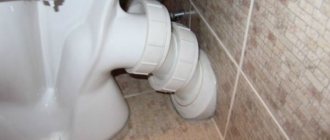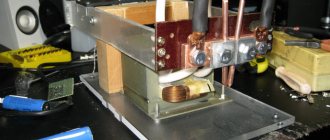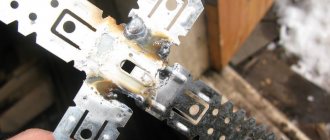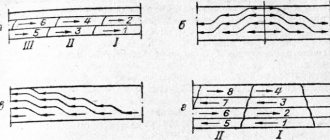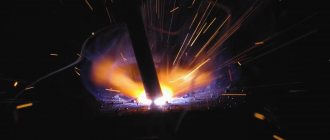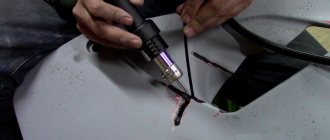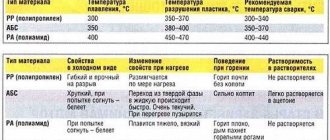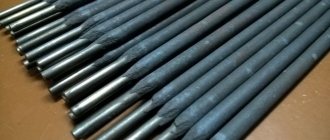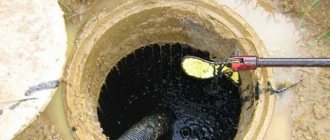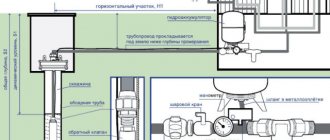Application area
The areas of application of laser soldering are varied:
- Making jewelry. Laser soldering of jewelry is a popular method of joining individual elements. This is due to the fact that the laser beam precisely affects the work area. It can be used to connect materials of different structures. For example, this applies to precious stones and precious metals.
- Creating strong connections on printed circuit boards. A focused beam combines contacts that are less than 1 mm. This allows you to make more precise seams.
- Glasses repair. Laser equipment does not heat the area around the broken contact, and the structure remains intact.
Powerful units allow you to fasten large parts of industrial machines.
Guide to equipment for laser welding and surfacing (by application)
| Application | Model | Note |
| Repair and production of jewelry, costume jewelry, etc., eyeglass frames | MUL-1 | Welding, soldering and surfacing of silver, gold, copper and other non-ferrous metals, silumin, titanium and other materials used in eyeglass frames. |
| Dental engineering: repair and production of bridge frames, crowns, implants, orthodontic devices, etc. | MUL-1 | Co-Cr, Ni-Cr alloys and other metals and alloys used in dental technology. |
| Welding of advertising volumetric structures, typesetting letters, etc. | MUL-1(B) | Steel, stainless steel, aluminum alloys. Laser welding with a fiber output (fiber end or focusing attachment). |
| Restoration and repair of molds, dies, equipment, etc. | LAT-IILAT-SMUL-3D | Tool steels, nickel, aluminum alloys and other metals. Laser surfacing in automatic and semi-automatic mode. |
| Production and repair of medical instruments, equipment and other equipment and devices for medical purposes. | MUL-1MUL-1-MMUL-1(V) LAT-S | Stainless steels, titanium and other metals and alloys. Laser welding and surfacing in both manual and automatic modes. |
| Sealing of electronic equipment housings, microcircuits, etc. | MUL-1MUL-1-M | Stainless steels, kovar and other metals and alloys. Laser welding in manual and automatic mode. |
| Sealing and installation of sensors for various purposes, welding of bellows and filters. | MUL-1MUL-1-M LAT-S | Laser welding in manual and automatic mode. |
| Sealing and installation of heat exchangers | LAT-S | Stainless steel and other metals and alloys. Manual and automatic laser welding and surfacing. |
| Other industrial applications | MUL-1MUL-1-MMUL-1(V) LAT-S | Sealing, installation, restoration and other operations for processing various parts in different areas of industry. Spot and seam laser welding and surfacing in manual and automatic mode. Linear, circular and complex configuration welds. |
Advantages and disadvantages
Laser soldering has a number of strengths compared to other methods of joining parts:
- Only the desired area is heated, which allows you to work without overheating neighboring elements on the board.
- High speed of heating of the working area.
- Ability to work with elements no larger than a fraction of a millimeter in size.
- There is no need to touch the heated parts with the tool. The laser works without contact.
- You can work with noble metals without disturbing their structure.
- No noise during operation.
- There is no contamination at the junction of individual elements.
- Laser units are most often equipped with CNC systems. This improves the accuracy of work.
However, in addition to the advantages, machines that generate a focused beam have certain disadvantages. An unstable electrical voltage is generated at the output. Because of this, errors can often occur. Laser exclusion may damage vision.
Voltage instability can lead to destruction of the board and damage to individual radio components. To reduce the risk of damage to parts, you need to change the intensity of the equipment’s radiation and change the size of the laser spot.
Equipment
The laser unit is a high-tech soldering iron that works in a non-contact manner. Regardless of whether the equipment is expensive or cheap, it consists of several elements:
- The base on which the main structure with movable elements is fixed.
- Guides for moving the working part.
- A laser head consisting of a drive and a set of focusing lenses.
- Control systems.
If the unit is equipped with a CNC system, it is supplemented with stepper motors, a monitor, and a remote control for creating algorithms.
Soldering iron for laser soldering
Solders for precious metals
To join jewelry, you need to use special solders. Jewelers recommend buying consumables that consist of precious metals. It can be a compound of tin, lead, silver, or antimony. The high price is due to
Basic methods
With the development of technology, new ways of processing jewelry have emerged. When it comes to joining metals, there are 4 main methods that jewelers use.
Arc point
This is a classic method of welding metal parts, performed using a welding machine, on the torch of which a refractory electrode is fixed. After turning it on, an electric arc is formed, with the help of which the parts are welded. However, using a conventional welding machine, it is impossible to process jewelry without damaging it. For this, a special unit is used that operates in pulse mode.
The design of the unit for working with precious metals differs from a conventional welding machine. The working element is a storage capacitor. Once turned on, it generates electrical impulses. Because of this, welding is called spot welding. The pulse manages to melt the alloy, but does not violate the integrity of the part.
Modern models are equipped with special binoculars, with which you can examine small elements and apply impulse more accurately. Additionally, argon is supplied to the soldering site, which protects the connection from the formation of an oxide film.
Contact
A technological process similar to an industrial method. Two separate parts are compressed together and an electric current is applied to them. Resistance welding is performed as a temporary procedure before the main soldering of individual parts. A jewelry making machine consists of two punches through which voltage is applied. Parts are fixed between them. They cuddle up to each other. Next, the jeweler presses the pedal to apply current.
Laser
An installation that generates a laser beam, which is focused using lenses installed in a certain sequence. The emitter is a drive on which a yttrium aluminum garnet is mounted.
The radiation that passes through this mineral is optimal when working with noble metals. Heating is produced more efficiently. The accuracy of the work performed and the ability to touch small areas without overheating the surrounding areas attract jewelers to laser equipment.
A power regulator that generates a heating beam allows you to work with different alloys and homogeneous metals.
Soldering equipment
Diffusion welding
It is an industrial version of joining workpieces of different sizes. Principle of operation:
- Workers clean the joining surfaces of the parts. They should not have any unevenness, dirt, rust, or decorative coatings.
- After stripping, the workpieces are clamped together using a vice so that they visually represent the finished product.
- The structure is placed in a muffle furnace. Heating to high temperatures occurs.
The workpieces are kept at one temperature for a certain time. At this time, the atoms of the two parts at the junction are mixed and form a reliable connection. The product is removed from the oven and allowed to cool in air without the use of coolants.
Features of using laser welding for glass and plastic products
- Specifics of welding products with thin walls
- Potential seam problems
To perform laser welding of plastic products, solid-state installations with a relatively simple device are used. There are two electrodes installed in the reflective tube. Between these electrodes there is a mixture of ionizing gases. Solid-state installations are often used to restore glass or plastic glasses. This is especially true when frames break, since there is no need to use solder for laser welding.
The stages of laser welding of plastic and glass products are similar to what happens when welding metal products:
- All surfaces of parts or elements to be welded must first be cleaned of all contaminants, including dust or small stains.
- Next, you can prepare the solid-state installation and electrodes for work.
- The focusing lens needs to be finely adjusted. If you forget to do this or make the adjustment incorrectly, the lens will be out of focus, which will lead to problems. This may be the melting of metal in a local area or the appearance of a blurred laser beam.
- Correct lens adjustment results in the creation of a focused, circular beam.
- All that remains is to set the appropriate welding power.
Specifics of welding products with thin walls
The competitive advantage of laser welding is its versatility, that is, suitable devices and devices can be selected for a certain type of work. Here it is better to build on the characteristics of the materials being welded. If you need to weld products with thin walls, then gas-based devices and solid-state lasers can be used for this. The second option is more popular, especially if you need to work with miniature products with a diameter of 0.01 to 0.1 mm. For example, we can consider welding thin wire leads used in microelectronics
You can also call laser spot welding, which also uses a solid-state laser device. But there are two requirements for materials - the presence of a foil structure, as well as a point diameter in the range from 0.5 to 0.9 mm.
To weld miniature products or products with thin walls, you need to set the minimum power. For pulse mode, you need to reduce the pulse duration, but increase the duty cycle. And an increase in laser speed is required when using continuous mode.
Potential seam problems
In production conditions, laser welding tests are regularly carried out, so seam defects occur very rarely. Although there are defects in production. It is impossible to completely protect yourself from lack of penetration and other seam deformations. In addition to lack of welding, we can name such laser welding defects as:
- The appearance of welded shells, craters, sagging.
- Burns.
- Foreign inclusions.
- The appearance of cracks or pores.
Such defects are the most common, and they arise due to non-compliance with the established operating procedure. The welder can set incorrect settings in the equipment without taking into account the characteristics of the material being welded. He may also forget to follow the trajectory of the laser beam. To obtain a perfect seam, the welder requires attentiveness and complete concentration until the very end of the job.
Laser welding technology can be characterized as follows: it is one of the most popular and universal methods of joining different materials. This includes various types of metals, as well as plastic, glass, and products made of precious metals. The finished connection will be strong and durable, but it all depends on compliance with the necessary welding technology. To be confident in the final result, you need to have experience working with solid-state installations.
